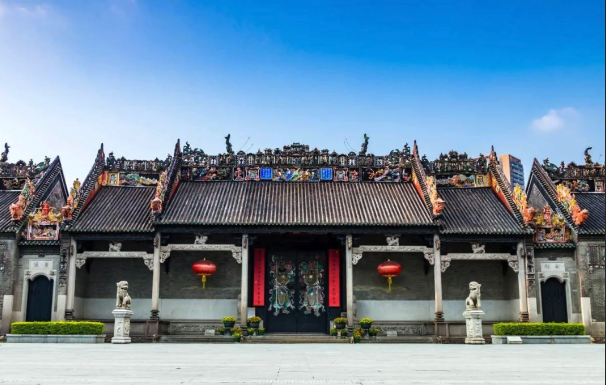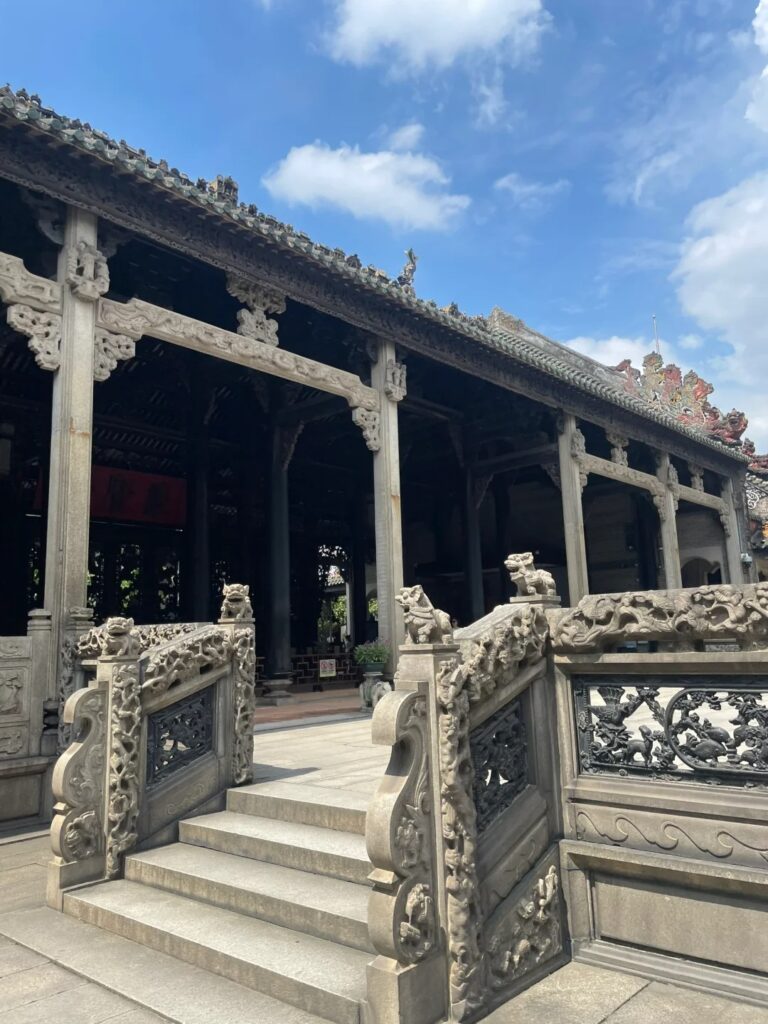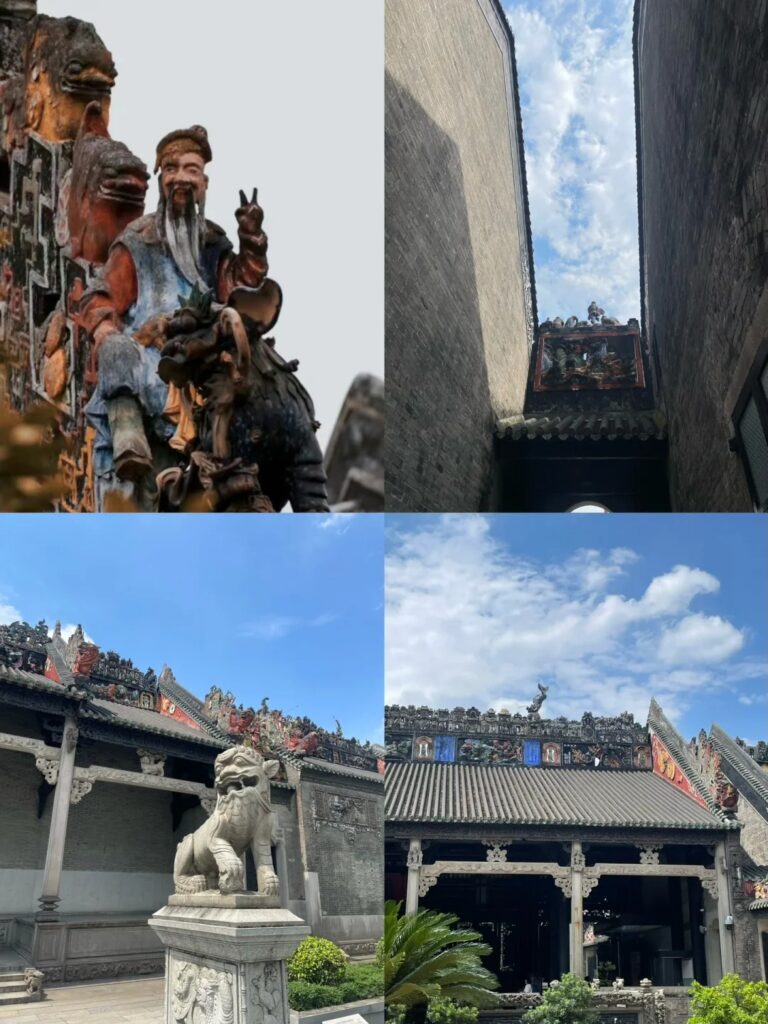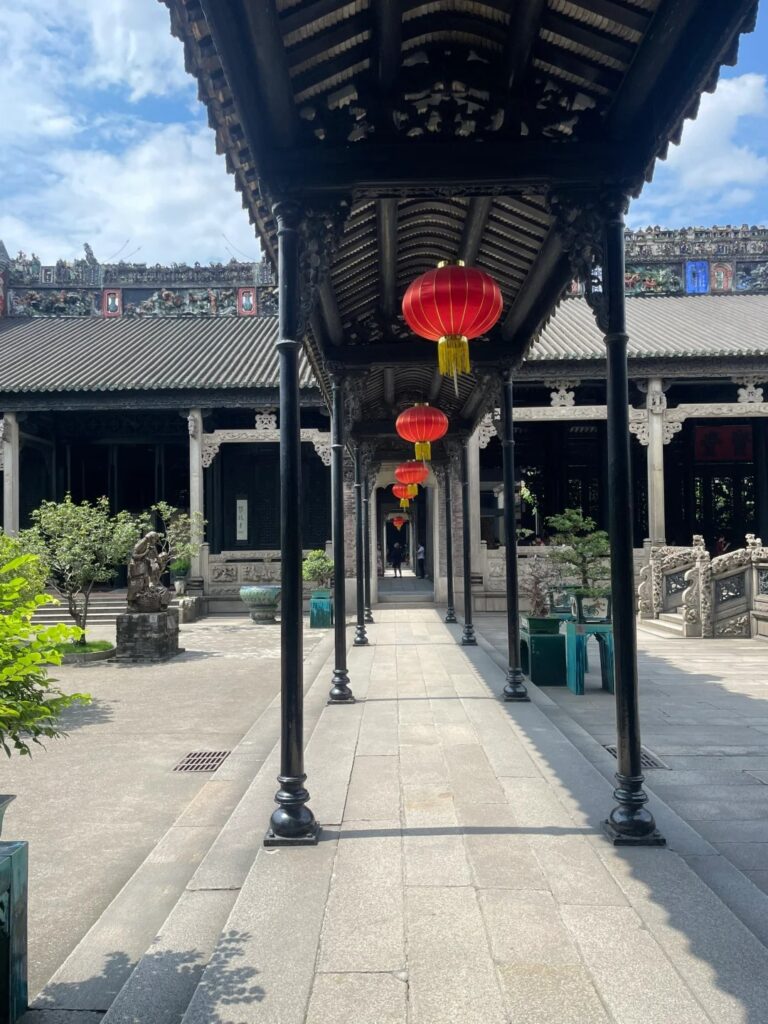The Chen Clan Ancestral Hall in Guangzhou, also known as the Guangdong Chen Clan Academy or simply Chen Ancestral Temple, is a significant cultural heritage site in the city, rich in history and cultural depth. The following is a detailed elaboration of its history and culture:

I. Historical Evolution
- Construction Background:
- The Chen Clan Ancestral Hall was built from the 14th to the 20th year of the Guangxu era of the Qing Dynasty (1888-1894), taking seven years to complete. This ancestral hall was jointly funded and constructed by the Chen clans from 72 counties in Guangdong Province, making it a magnificent structure built through collective clan efforts.
- Its initial purpose was to provide lodgings for Chen clan members participating in imperial examinations in Guangdong, as well as a venue for ancestral worship and clan affairs.
- Development Process:
- In modern times, the Chen Clan Ancestral Hall fell into disrepair. After the founding of the People’s Republic of China, the government conducted several repairs and conservation efforts to preserve it, making it accessible to the public.
- In 1988, it was listed as a Key Cultural Relic Under State Protection.
- In 2002, it was named one of the “Eight Scenic Spots of Guangzhou in the New Century.”
- In 2008, it was rated as a National AAAA Tourist Attraction.

II. Architectural Features
- Scale and Layout:
- The Chen Clan Ancestral Hall covers an area of approximately 15,000 square meters, with a construction area of 8,000 square meters. The complex consists of 19 independent courtyards connected by long corridors, forming a symmetrical layout with three axes and three entries.
- The architectural structure can be divided into three axes and three entries, with nine halls and six courtyards, exhibiting a traditional “three entries, three axes, nine halls, and two side wings” courtyard-style layout.
- Architectural Style:
- The Chen Clan Ancestral Hall is a classic example of traditional architecture in Lingnan (South of the Five Ridges, referring to a region in southern China), blending Han Chinese and local folk architectural features. Its primary decorations include woodcarvings, stone carvings, and brick carvings, showcasing exquisite craftsmanship and the unique charm of Lingnan architectural art.
- The front facade is spacious and majestic, surrounded by high walls, forming an enclosed courtyard. The complex contains multiple courtyards and corridors interconnected to create a staggered spatial layout.
- Decorative Arts:
- The decorative arts of the Chen Clan Ancestral Hall are extremely rich, earning it the reputation of being a “comprehensive collection of decorative arts in Lingnan architecture.” Its woodcarvings, stone carvings, brick carvings, plaster carvings, and ceramic sculptures are exquisitely crafted, with contents ranging from figures, flowers, birds, beasts, to landscapes, fully demonstrating the superb craftsmanship and cultural depth of Lingnan traditional crafts.
- In particular, the woodcarvings on the beams and pillars of the main hall depict historical allusions and mythical legends, carved with intricate detail and vividness, reflecting profound cultural heritage and craftsmanship.
III. Cultural Connotations
- Clan Culture and Ancestral Worship:
- As the ancestral hall of the Chen clan, it serves not only as a venue for ancestral worship and clan affairs but also as an essential place for clan members to connect emotionally and pass on family traditions. The clan culture and ancestral beliefs embodied here are significant for studying traditional Chinese social structure and family culture.
- Folk Culture Display:
- The Chen Clan Ancestral Hall houses multiple exhibition halls showcasing rich Lingnan traditional folk culture. Exhibitions cover traditional wedding customs, festive activities, and folk arts, enabling visitors to gain a deeper understanding of the traditional customs and lifestyles of Lingnan.
- Folk Craft Display:
- The Chen Clan Ancestral Hall is also the location of the Guangdong Folk Art Museum, which houses over 20,000 precious artifacts and modern craft masterpieces, including nearly 3,000 national-level treasures. These exhibits encompass various craft forms such as Shiwan pottery, Canton enamel, ivory carving, Cantonese embroidery, Guangzhou woodcarving, brick carving, and stone carving, showcasing the essence of Lingnan traditional crafts.
IV. Conclusion
The Chen Clan Ancestral Hall in Guangzhou, as an outstanding representative of Lingnan architectural art and an essential cultural heritage of Guangdong Province, is renowned not only for its
picure by xiaohongshu

